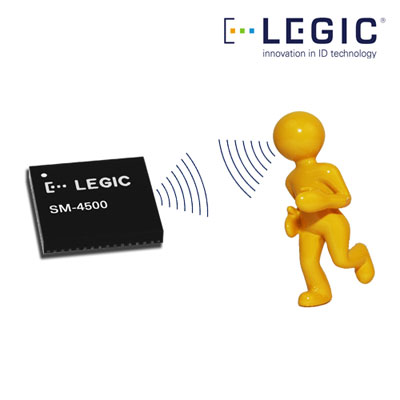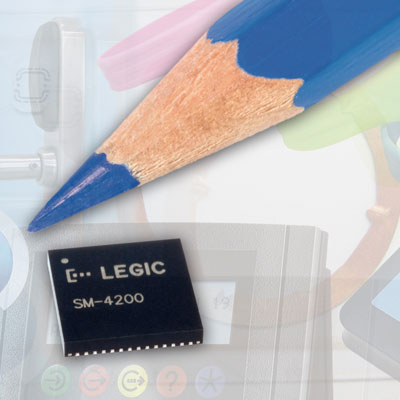LEGIC LEGIC advant 4000 series (2)

The new reader chip SM-4500 and the new OS-4000 V2.0 make the LEGIC advant 4000 series the most versatile reader generation of LEGIC. The great novelty of the SM-4500 is the initialisation function, which enables the creation and the management of segments on LEGIC transponders. With the installation of OS-4000 V2.0 the complete LEGIC advant 4000 series further supports common third party transponders, e.g. MIFARE Classic und MIFARE DESFire. This feature opens up a bigger market for readers. Through its compact design, its low-power consumption and a versatile and simple application interface LEGIC advant 4000 based readers integrate themselves in a wide variety of applications. Creation and management of segments with the SM-4500 The new SM-4500 includes the complete function set to create and manage segments on transponder chips. Thus the initialisation of smart cards becomes easier and the management of a system is more comfortable than ever before. Interoperability with MIFARE transponders LEGIC advant 4000 reader modules support all common RF standards and can therefore be used in an extreme wide variety of installations. With the introduction of the OS-4000 V2.0, this key feature is further enhanced – so that, besides the RF standards, the required cryptographic functions for the complete MIFARE transponder family are supported by LEGIC advant 4000 readers. New features and a full backward compatibility The coexistence of LEGIC advant 4000 readers in existing installations is secured by a full backward compatibility with all existing LEGIC products. The SM-4500 is further pin-compatible with the SM-4200 and thus integrates itself easily in existing designs. New installations benefit additionally from the extended possibilities and the higher efficiency – which is also prepared for future challenges. Suitable for all applications The LEGIC advant 4000 series features an extremely compact design and low-power consumption. A smooth integration in readers, easy deployments with battery-powered applications and a simple usage of the smart card technology offer attractive designs, new applications and a unique comfort for operators and users.
Add to Compare
The market for contactless identification technology is constantly moving. Requirements for advanced security and reliability are increasing, along with demands for comfortable and internationally flexible use. Manufacturers of readers and credentials, along with systems integrators, require technologies that fulfil high functional requirements and user-related criteria to the same extent. The new LEGIC SM-4200 reader chip rises to this challenge. The established variety of supported applications, such as access control, time & attendance, offline locks, IT access or cashless payments, is only the basis. Due to the extremely small size (8 x 8 mm) and the compact design of the new LEGIC reader chip, manufacturers are offered even more flexibility in developing their applications. A much longer battery lifetime also makes the chip attractive for offline applications such as lockers or furniture locks. Open technology platform The challenges are even more demanding when you consider the complex system of different technologies, manufacturers and industrial standards that characterises almost all modern security solutions. Intelligent basic technology, as used by SM-4200, is open to a variety of standards and transponder types, has a high level of interoperability and can be easily integrated into existing installations. Security standards are also increasing on a daily basis. It is therefore more and more important for a technology platform in the field of secure personal identification to include an encryption package that can be upgraded on demand. This openness not only guarantees high protection of investments, but also ensures that installations always comply with the most up-to-date security standards. Setting trends The new development of the LEGIC advant SM-4200 reader chip is perfectly in line with the trend for compact, interoperable and energy-efficient solutions, which can be flexibly integrated into existing infrastructure. Ultimately, the end user's comfort is enhanced through the use of flexible and versatile reading technology.
Add to Compare